Carlos Jose Hernandez and Joshua Zuazo were sentenced to life without the possibility of parole in the 2024 murder of Hussein “Sam” Murray.
5 modern forces that shaped the industry, part II
In part two of a two-part series, columnist Jan Brassem examines the final three factors he says disrupted and transformed the jewelry industry over the past 35 years.

As discussed in Part I, I’d like to briefly summarize five unique industry forces (there are more, of course) that, in my view, transformed the U.S. jewelry industry from what it was in my “good old days” to what it is today.
I’ll use my non-jewelry education, combined with 37 years of industry experience, to take look a look back through the rear window. The first two dynamics, gold price gyrations and the tech industry’s jewelry store “fly-by,” were presented in Part I.
3. The industry in consolidation
We’ve all been reading about the acquisition of the Zale Corp. by Signet Jewelers. Signet now operates more than 3,600 jewelry stores under various corporate names.
Although the Zale acquisition was one of the most publicized financial transactions, it was by no means the only one. There have been plenty of transactions recently although few are well publicized. As a matter of fact, financial transactions in the jewelry industry are now at an all-time high.
The forms of cooperation, such as acquiring a company, merging with another, developing an alliance, etc. are endless. They are as effective a tool as brand strategy or product merchandising--just a little more complicated.
In my day acquisitions, mergers or any “restructuring,” were not common, at least not as it is now. Jewelers have only recently started to realize that in the current climate of globalization, technological advances, segmented markets and increased competition, growth through a strategy of merger and acquisition, or other sophisticated transactions, can be faster and cheaper than organic expansion.
Thirty years ago, sagacious jewelers usually sold their firms because they realized, after spending decades in the store, it was time to retire and enjoy the remaining years in Florida, or wherever. Usually, there were no relatives in the business, no succession.
The one exception, if I remember correctly, was one of our customers, a progressive buying group on the West Coast. The group had 17 stores with 10 store owners/buyers. Today they have almost 120 stores, including the “old” members.
Today’s jewelers have moved away from their comfort zone. Instead of buying diamonds and considering showroom décor--things they have been doing for years--they are trying to recognize the brain-numbing matrix curves and SWOP analysis, metric averages and implementation plans.
As I’ve written before, today’s jewelry owner will no longer be known as a jeweler, but transformed into a sophisticated businessman.
4. Marketing channel pandemonium
In the “good old days,” there were only a few retail marketing channels that would carry a jewelry line.
Some of these are no longer viable (Best Products and Service Merchandise come to mind.) Other channels, like jewelry wholesalers--also called jewelry distributors, which carried watches as well as jewelry supplies--closed their doors too. (Bernstein Biggard and Norvell Marcum were household names then.)
Other channels such as department stores, like Macy’s, were as popular then as they are now. Ironically, even in those days, Zale Corp. was experiencing some financial distress as was J.C. Penney. Even then, Tiffany was the leader of the pack in terms of quality and elegance. I assume in profitability too.
Now comes the exciting part.
Enter Home Shopping Network Inc., a/k/a HSN, quickly followed by QVC and several other me-too, HSN-type operators. Their arrival showed the industry and the jewelry buyer that expensive jewelry could be shipped by mail, or FedEx, with only minimal risk of theft.
Although it took at least 10 years to develop, the maturation and marketing sophistication of the Internet changed the jewelry industry forever. Now every retailer--jewelry and non-jewelry, large or small, domestic or international--had the ability to sell their products online as well as through their brick-and-mortar facility. Having a web site, as the saying goes, allows anyone to sell jewelry from their basement in pajamas.
These distribution channels naturally morphed into companies that marketed via web sales only. Blue Nile, through careful sourcing and merchandising, captured a solid market share of the diamond wedding ring business.
Today’s consumer, compared to my “what’s-a-computer?” generation, is now technologically sophisticated. Many were using computers before their first day of school. The computer became their training wheels, so to speak. They are the “Internet Generation.”
It would take a thick marketing volume detailing, with extensive U.S. and international market research, which strategies are necessary to sell to this new Internet-savvy customer amid this tumultuous distribution environment. If you haven’t designed a strategy by now, start strategizing.
5. Global competition and opportunity
Rapid urbanization and growing wealth are helping to create new markets for jewelry in nations such as Brazil,
India, China and Russia (known as the BRIC countries, although Russia is temporarily off the list.)
China, of course, with its 1.4 billion population and insatiable appetite for anything jewelry, is a hot market, says Lyle Rose, our firm’s senior partner in Hong Kong.
One challenge for retailers in emerging markets is illegal imports. Another issue for American jewelry retailers in new markets is establishing brand awareness. Jewelers might need to conduct brand awareness campaigns and advertise heavily to grow in areas with a wide-open retail market environment.
There is presently a cross-border acquisition frenzy by foreign firms acquiring U.S. firms. It is felt that, in the long run, an acquisition strategy will accelerate the buyer’s market penetration and minimize the cost. For example, Boston’s Hearts on Fire was acquired by China’s largest retail jewelry firm, Chow Tai Fook.
The best example of the escalating global activity in the jewelry industry is the growth of international jewelry trade shows. In the “good old days” there were but a handful, led by the JCK and JA New York shows in the U.S., the Baselworld show in Europe and the Hong Kong show.
Today, there are many more all over the world, in places including the Middle East, Turkey, China and even Vietnam.
When all is said and done, what is the prognostication for our industry, at least through 2020?
McKinsey and Co., the foremost consulting and advisory firm in the world, writes the following: “It seems likely that the jewelry market of 2020 will be highly dynamic, truly globalized and intensely competitive.”
Those jewelry companies that can best anticipate and capitalize on industry-changing trends--particularly the five described in these two columns--will shine brighter than the rest.
The Latest

Yood will serve alongside Eduard Stefanescu, the sustainability manager for C.Hafner, a precious metals refiner in Germany.

The New Orleans jeweler is also hosting pop-up jewelry boutiques in New York City and Dallas.

How Jewelers of America’s 20 Under 40 are leading to ensure a brighter future for the jewelry industry.

Set in a Tiffany & Co. necklace, it sold for $4.2 million, the highest price and price per carat paid for a Paraíba tourmaline at auction.


The jeweler’s “Deep Freeze” display showcases its iconic jewelry designs frozen in a vintage icebox.
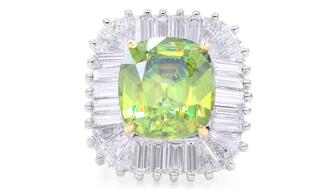
Take luxury gifting to new heights this holiday season with the jeweler’s showstopping 12-carat sphene ring.

Roseco’s 704-page catalog showcases new lab-grown diamonds, findings, tools & more—available in print or interactive digital editions.

This year's theme is “Unveiling the Depths of the Ocean.”

In its annual report, Pinterest noted an increase in searches for brooches, heirloom jewelry, and ‘80s luxury.

Starting Jan. 1, customers can request the service for opal, peridot, and demantoid garnet.

The 111-year-old retailer celebrated the opening of its new location in Salem, New Hampshire, which is its third store in the state.

The new catalog features its most popular chains as well as new styles.

The filmmaker’s personal F.P. Journe “FFC” prototype was the star of Phillips’ recent record-setting watch auction in New York.

The new location in the Design District pays homage to Miami’s Art Deco heritage and its connection to the ocean.

Inflations, tariffs, and politics—including the government shutdown—were among consumers’ top concerns last month.
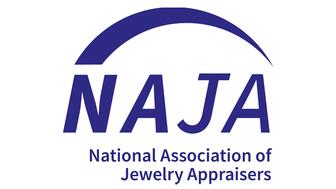
“Longtime favorite” presenters, as well as first-time speakers, will lead talks and workshops at the annual event in Tucson next year.
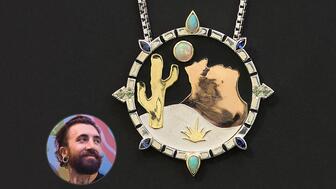
Silas Smith of Meridian Metalworks won the challenge with his pendant that blends Australian and American landscapes.
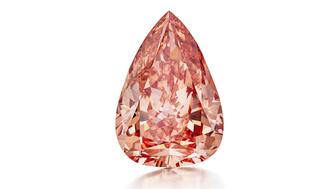
The sale of the 31.68-carat, sunset-hued stone was part of Sotheby’s first series of events and auctions in Abu Dhabi.

Most customers who walk into your store this month have made up their minds. Your job is to validate their choice, Emmanuel Raheb writes.

The collection features characters and motifs from Ukrainian folklore, including an enchanted mirror and a magic egg.

MatrixGold 3.11, the newest version of the jewelry design program, offers more flexibility, precision, and creative control.

The pavilion will be part of the 2026 JA New York Spring show, scheduled for March 15 to 17.

Kadet, a 1994 National Jeweler Retailer Hall of Fame inductee, helped grow the family-owned retailer in the Chicago area and beyond.

Billed as the world’s smallest wearable, Lumia Health’s new smart earrings have a health tracker subtly embedded in the back.
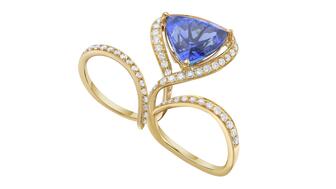
Don’t let those with December birthdays feel blue. Help them celebrate their month with blue zircon, turquoise, and tanzanite.

The new pink sapphire version of the piece dances with its wearer in the brand’s “Icons After Dark” holiday campaign.

























